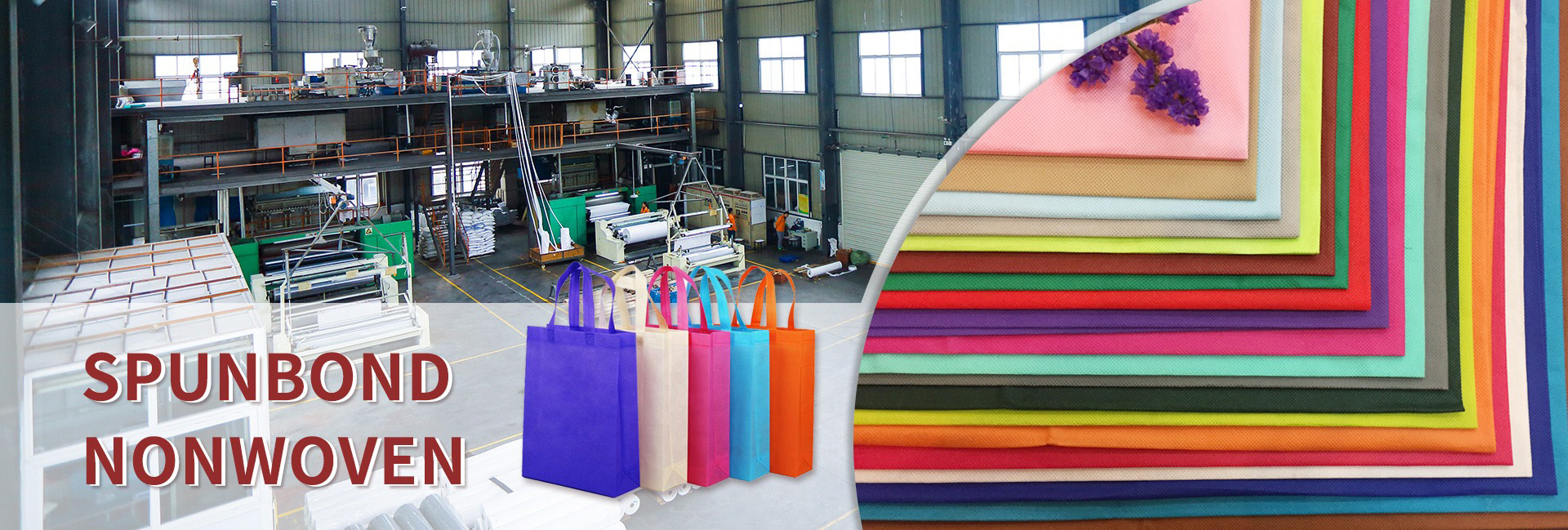
Products
Biodegradable polypropylene composite spunbond nonwoven fabric
Due to the saturated carbon carbon single bond molecular structure of polypropylene, its relative molecular structure is relatively stable and difficult to degrade rapidly. While this simple polypropylene spunbond nonwoven fabric brings convenience to people’s production and life, it also causes certain environmental pollution. Therefore, the preparation and research of environmentally friendly and biodegradable polypropylene composite spunbond nonwoven fabric are particularly important. Polylactic acid is a biodegradable polymer with excellent biocompatibility and mechanical properties. It can be combined with polypropylene raw materials to prepare biodegradable polypropylene composite spunbond nonwoven fabrics, thereby reducing the environmental pollution caused by polypropylene spunbond nonwoven fabrics.
Performance of biodegradable polypropylene composite spunbond nonwoven fabric
In the process of preparing biodegradable polypropylene composite spunbond nonwoven fabric, factors such as the speed of the metering pump, hot rolling temperature, and spinning temperature can have a significant impact on the physical properties of the spunbond nonwoven fabric. Adjust according to customer requirements such as weight, thickness, tensile strength, etc.
The influence of metering pump speed
By setting different metering pump speeds, the fiber properties of the prepared composite fiber filaments, such as linear density, fiber diameter, and fiber fracture strength, are analyzed to determine the optimal metering pump speed for the performance of the prepared composite fiber filaments. At the same time, by setting different metering pump speeds to analyze the performance indicators such as weight, thickness, and tensile strength of the prepared composite spunbond nonwoven fabric, the optimal metering pump speed can be obtained by integrating the fiber properties and nonwoven properties of the composite spunbond nonwoven fabric.
The influence of hot rolling temperature
By fixing other preparation process parameters and setting different rolling mills and temperatures for hot rolling, the influence of hot rolling temperature on the properties of the prepared composite fiber filaments is studied and analyzed. When the hot rolling reinforcement temperature of the rolling mill is too low, the hot-rolled fibers cannot be fully melted, resulting in unclear patterns and poor hand feel. Taking the preparation of biodegradable polylactic acid/additive/polypropylene composite spunbond non-woven fabric as an example, when the hot rolling reinforcement temperature reaches 70 ℃, the composite fiber lines are clear and there is slight sticking to the roll, so 70 ℃ has reached the upper limit of the reinforcement temperature.
The influence of spinning temperature
The influence of different spinning temperatures on the properties of composite fiber thread density, fiber diameter, and fiber fracture strength, as well as the properties of biodegradable polypropylene composite spunbond nonwoven fabric, while fixing other preparation process parameters.
Process technology flow of biodegradable polypropylene composite spunbond nonwoven fabric
(1) Slice polylactic acid, polypropylene, and maleic anhydride graft copolymer and mix them in appropriate proportions;
(2) Use an extruder for granulation and a spinning machine for spinning;
(3) Filter through a melt filter and form a mesh under the action of a metering pump, a blow dryer, and high-speed flow field airflow stretching;
(4) Produce qualified spunbond nonwoven fabrics through hot rolling bonding reinforcement, winding, and reverse cutting.











